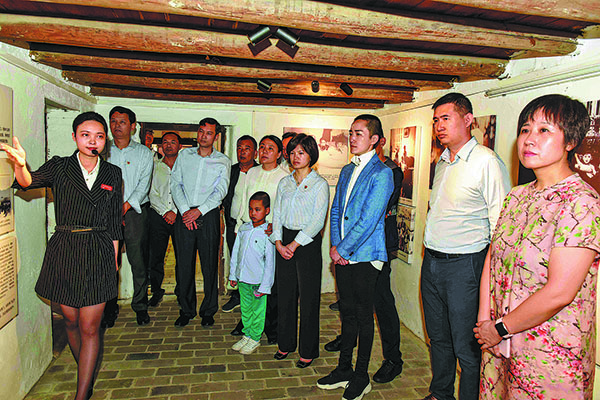

Various regions have actively explored the establishment of regional and county-level cultural heritage-themed tourist routes, achieving varied results, said Guan Qiang, deputy director of the National Cultural Heritage Administration at the conference, where representatives from 14 provincial cultural relic departments, and those from Hong Kong and Macao, were present.
Guan emphasizes that various regions and relevant departments should thoroughly implement the spirit of the important exposition by President Xi Jinping on cultural heritage work, enhance ideological awareness, fulfill their primary responsibilities, and promote the establishment of cultural heritage-themed tourist routes.
He says it is necessary to strengthen interdepartmental collaboration, coordinate the establishment of cultural heritage-themed tourist routes according to such aspects as cultural heritage, culture and tourism, development and reform, as well as promote the work in a concerted manner.
Top-level design should be strengthened to systematically plan cultural heritage-themed tourist routes, prioritizing the exploration of values, and promoting the display of, and access to, lower-level immovable cultural heritage sites, Guan adds.
He also called upon relevant parties to take steps to develop the themed routes, implement cultural relic protection, restoration, display and utilization.
Folk performances and distinctive sports experiences can be integrated to promote the cultural relic routes, says Guan.
China has seen notable progress in the excavation, utilization and protection of cultural relics, according to official statistics.
The country has more than 766,000 immovable cultural relics and 108 million State-owned movable cultural relics, according to a 2021 report from the State Council.
The country has strengthened archaeological work by approving the implementation of over 7,000 archaeological excavation projects, achieving important results, the report says, adding that an average of more than 1 billion yuan ($139.3 million) is spent on ensuring the safety of cultural relics every year.
At the November conference, Long Jiayou, deputy director of the Guangdong culture and tourism department, said establishment of cultural relics-themed travel routes has broken away from the traditional scattered utilization of cultural heritage, stringing together cultural and historical resources with different themes.
Long thinks of cultural relics protection units as transcending time and space while they record the footprints and living conditions of our predecessors, as well as their beliefs and pursuits.
"The proposal and development of cultural relics-themed travel routes inject a vividly new gene into cultural tourism and offer a delightful way to inherit and promote the cultural spirit," Long says.
" (The efforts) represent a new scene, a new calling card, and a new attempt at the integrated development of culture and tourism," he adds.
In addition to the Nanyue ancient post road, Long says Guangdong abounds in cultural relics, and local authorities have strived to break the spatial and physical barriers between them and create routes that are educational, enjoyable and accessible.
Lu Yuanzheng, head of Zhejiang Province Institute of Architectural Design and Research, shared the overall planning of the travel route of Su Shi, a renowned poet during the Song Dynasty (960-1279), at the conference.
"The focus lies in narrating the life story of Su with an emphasis on highlighting his contemporary values," Lu says.
The key is to present a broadminded ideology with a sense of responsibility for the world through Su's stories, showcase the philosophy of universal love and the outstanding traditional qualities of seeking truth, practicality and reality, Lu explains.
The travel route should outline the various stages of Su's life, follow a main chronological storyline, and connect different geographical spaces.
At the same time, it should impart a differentiated thematic positioning of the cities Su visited throughout his life, thereby creating a cohesive narrative structure across urban units, Lu says.
For instance, Su was deprived of power when he was exiled to Huizhou, but he fully leveraged his connections to do good deeds and accomplish practical tasks for the people.
His achievements have continued to benefit the people of Huizhou. He also achieved the elevation of personal character and his life pursuits in the process, according to Zhang Wei, a senior engineer with the Zhejiang institute.
Zhang suggests that related parties in Huizhou pay keen attention to authenticity and integrity when presenting Su's footprint on the city nearly 1,000 years ago, while trying their best to re-create travel routes he took, in order to provide visitors with an immersive experience.